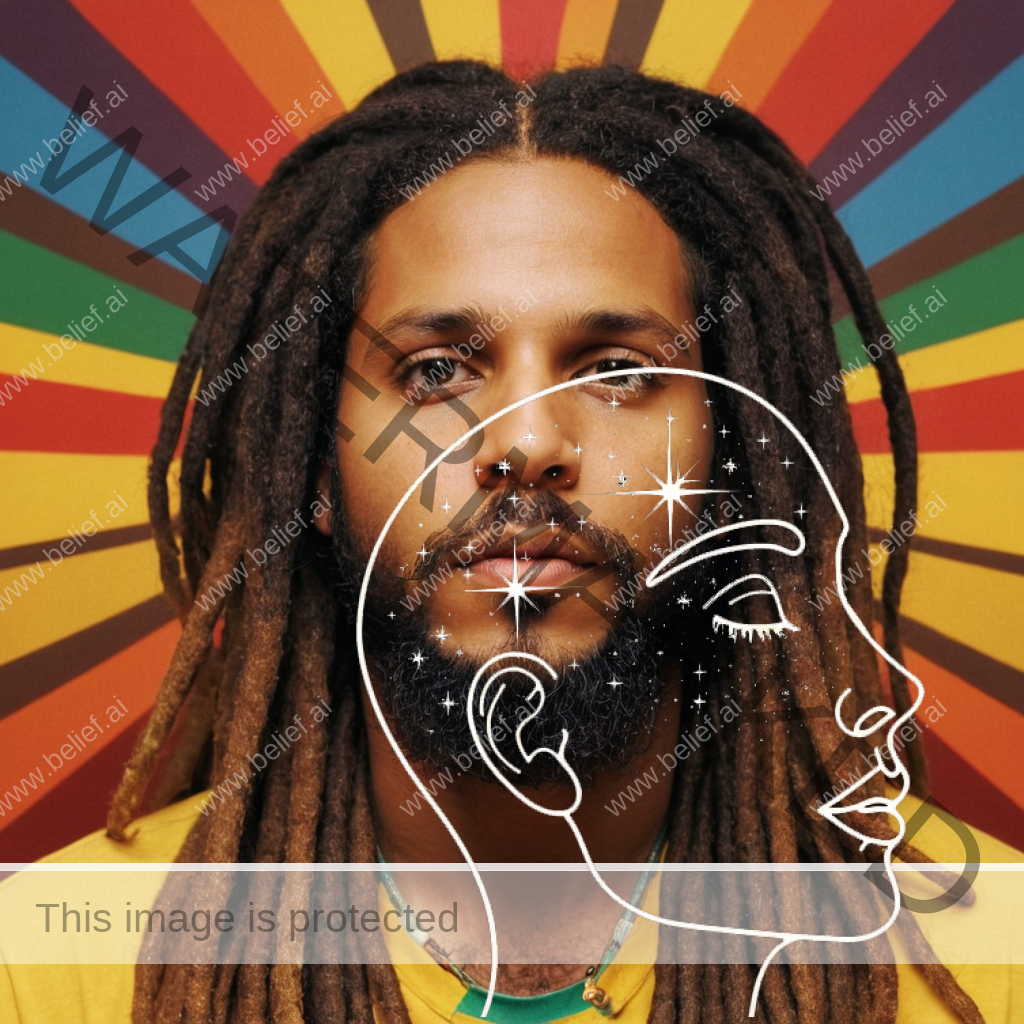Open your mind to the vibrant hues of a unique and colorful tapestry, a spiritual thread woven into the fabric of human history and culture. Beyond the world’s stereotypical view of dreadlocks and reggae music, we go into the depth of the Rastafari movement. As we dive into the rainbow of Rastafari, let’s unravel its global distribution, origins, founders, history, beliefs, community, sacred texts, ethical norms, cultural impact and contemporary challenges in this voyage of discovery.
Global Distribution and Demographics
Rastafari, often referred to as Rastafarianism, is a spiritual movement that emerged in Jamaica in the 1930s. Today it stretches its colorful threads across the globe with an estimated global population of about one million followers. Although the largest concentration of Rastafarians is still found in Jamaica, the movement has gained notable followers in the United States, the United Kingdom, and parts of Africa as well.
Rastafari is not just a spiritual movement isolated to specific geographic regions; it transcends borders and demographics. The spirit of Rastafari, embodied in its vibrant music and strong social messages, has permeated every continent from the Americas to Australia. The shades of Rastafari are visible in the diverse socio-cultural contexts within which it has emerged, as it has been adopted by varying ethnic and racial groups around the world.
Even though the Rastafari movement is relatively small when compared to major world religions, its influence far outstrips its size. The distribution of Rastafari and its adherents exhibits a rich tapestry of diversity and the power of a spiritual movement to cross geographical and cultural boundaries.
Origin, Founders, and Key Figures
Rastafarianism sprung from the fertile soil of Jamaica during a time of social unrest and longing for identity. Its roots are bound with the influential figures of Marcus Garvey, a political activist who championed black nationalism and who inadvertently prophesied the crowning of a black king, seen as the return of the Messiah. This came to fruition with the crowning of Emperor Haile Selassie of Ethiopia in 1930. Selassie, originally named Ras Tafari Makonnen, became a key figure in the Rastafari movement and is regarded by Rastafarians as the returned Messiah.
Leonard Howell, often regarded as the first Rasta, is credited with being the founder of the Rastafari movement. Howell, along with three other founding fathers – Joseph Hibbert, Archibald Dunkley, and Robert Hinds – laid the foundations for this vibrant movement. Since then, the movement has expanded globally, thanks in part to the international fame of reggae artist Bob Marley who mainstreamed some of the Rastafari beliefs through his music.
Each of these key figures, in their unique ways, contributed to the growth and development of the Rastafari movement. They brought forth the vibrant rainbow of Rastafarianism that we know today, illuminating the path for millions of followers worldwide.
Brief History

The history of Rastafari is a vibrant saga of resistance, identity, and spiritual awakening. The movement started in the 1930s among working-class black people in Jamaica. The socio-economic and political climate of the time, marked by oppression and the aftermath of colonization, created fertile ground for the emergence of this spiritual movement.
The coronation of Haile Selassie as Emperor of Ethiopia in 1930 played a significant role in shaping the Rastafari movement. Rastafarians saw this event as the fulfillment of Garvey’s prophecy. They believed Selassie to be the returned messiah, the black king that Garvey had spoken of. This gave rise to the name “Rastafari”, taken from Selassie’s pre-coronation name, Ras (meaning ‘prince’) Tafari.
Throughout its history, Rastafari has faced significant persecution and stigma, with practitioners often marginalized. However, the movement has stood resilient, its vibrant colors undimmed. Today, Rastafari is a recognized spiritual movement with followers spread across the globe.
Summary of beliefs
The beliefs of Rastafari are as varied and vibrant as the colors of the rainbow. At its core, Rastafari is a monotheistic belief system that worships a single God, referred to as Jah. Jah is considered to be present in every living being. Rastafarians regard Haile Selassie, the former Ethiopian emperor, as the earthly embodiment of Jah, and see themselves as the chosen people of God.
Rastafarians also believe in the concept of ‘I and I’, a complex notion signifying the oneness of God (Jah) and every human. This contrasts with the ‘I and you’ distinction made in many languages, reflecting a belief in the fundamental unity and equality of all people.
Another key belief of the Rastafari is the reverence for Africa, specifically Ethiopia, considered by them as the Promised Land or ‘Zion’. This is often tied to a desire for repatriation to Africa by those descended from slaves. These beliefs, along with practices like the Ital diet and the use of ganja as a sacrament, form the vibrant and varied spectrum of Rastafari faith.
Community and Social Structures
Rastafarian communities, known as mansions, are an important part of the Rastafari movement. Mansions are loosely organized groups that offer a space for communal worship and living. Despite the lack of a central authority, these communities maintain a strong sense of unity and collective identity through their shared beliefs and practices.
In Rastafarian society, elders are typically respected and hold positions of authority. They guide the spiritual and social life of the community. Women also play an important role, even if it’s traditionally more subdued. Despite the patriarchal overtones, there’s a growing movement of Rasta women asserting and redefining their roles within the faith.
Music, particularly reggae, holds a special place in the Rastafari community. It serves as a vehicle for expressing Rastafari beliefs, history, and aspirations. The drumming, chanting, and dancing during Nyabinghi, a communal Rastafari gathering, further strengthens the sense of community and unity among followers.
Sacred Texts and Writings
Rastafarians recognize the Bible as a sacred text, though their interpretation defers from mainstream Christianity. They typically use the King James Version, however, they view it as a text that has been corrupted by white supremacists. They often seek to ‘decode’ the text to reveal what they believe to be its true, Afro-centric meaning.
Aside from the Bible, Rastafarians also refer to the ‘Holy Piby’ and the ‘Kebra Nagast’. The Holy Piby, often known as the Blackman’s Bible, is considered a primary sacred text by many Rastafarians. The Kebra Nagast, meanwhile, is an ancient Ethiopian text, and tells the story of the Solomonic line of Ethiopian kings, a lineage believed to include Haile Selassie.
Speeches and writings of key figures, including those of Haile Selassie and Marcus Garvey, also hold a prominent place in the Rastafari canon. These texts, together, form the vibrant textual tapestry from which Rastafarians draw their beliefs and practices.
Ethical Beliefs and Moral Codes
Rastafarian ethical beliefs and moral codes are rooted in their deep respect for life, nature, and the divine within each individual. They hold strong values of peace, unity, and respect for all forms of life. The Ital diet, free from processed food and often vegetarian or vegan, is a manifestation of these values.
Rastafarians are expected to live a life of simplicity and humility, free from materialistic desires. They strive for purity in thoughts, words, and deeds, with an emphasis on truth, justice, and respect. The use of marijuana or ‘ganja’ is not seen as a recreational activity, but a spiritual one – a sacrament to aid meditation and achieve higher consciousness.
Their unique ethical code, known as ‘livity’, guides their lives. This spiritual lifestyle emphasizes living in harmony with the earth, in accordance with natural law, as well as upholding social justice and equality.
Cultural and Social Impact
The cultural and social impact of Rastafari extends far beyond its religious beliefs. The movement has made significant contributions to music, fashion, language, and social justice. Reggae, synonymous with Rastafari, has been a medium for expressing their spiritual beliefs and social commentary globally. The iconic dreadlocks hairstyle, symbolic of the Lion of Judah, and the Rastafari colors – red, green, and gold – are now globally recognized.
In language, Rastafarians have developed a dialect known as Iyaric, or Rasta talk, reconstructing English words to eliminate negative connotations and emphasize positive aspects. The movement also played a key role in the fight against colonialism and racism, promoting black pride and African identity.
Rastafari’s influence is a testament to the power of a small but vibrant movement to effect change and leave a lasting impact on global culture and society.
Contemporary Issues and Challenges
Like any other religious or social movement, Rastafari faces its own set of contemporary issues and challenges. These range from internal debates over belief and practice to external challenges of acceptance, recognition, and legal conflicts, particularly around the use of marijuana.

Women in Rastafari face particular challenges. Gender roles within the movement are often traditional, with women expected to uphold certain codes of modesty and deference. However, many Rasta women are challenging and redefining these roles, creating a vibrant dialogue within the community.
Despite the challenges, the Rastafari movement continues to evolve and adapt. Its resilient spirit, like the colors of the rainbow, remains vibrant and undimmed, as it continues to weave its rich tapestry into the fabric of human history.
More Ways to Learn
Here are some resources to help you learn more about Rastafarianism, its history, culture, and beliefs:
- Books:
- “The Rastafarians: Twentieth Anniversary Edition” by Leonard E. Barrett Sr.: This book provides an in-depth exploration of Rastafarianism, its origins, beliefs, and cultural practices.
- “Rastafari: A Very Short Introduction” by Ennis B. Edmonds and Diana Baird N’Diaye: This concise book offers an overview of Rastafari, its history, and its impact on Jamaican society and beyond.
- “The Book of Exodus: The Making and Meaning of Bob Marley and the Wailers’ Album of the Century” by Vivien Goldman: While focusing on Bob Marley and his music, this book also delves into the cultural and spiritual significance of Rastafarianism.
- Websites:
- Rastafarian.com (http://rastafarian.com/): This website provides information on Rastafarian beliefs, history, culture, and practices, including articles and resources for further reading.
- Rastafari.org (http://rastafari.org/): Another informative website offering articles, videos, and resources related to Rastafarianism and its teachings.
- The Rastafari Movement (https://therastafarimovement.com/): This site offers a wealth of information on Rastafarian beliefs, symbols, and practices, as well as news and updates related to the movement.
- Documentaries and Films:
- “Rastafari: Roots and Culture” (2008): This documentary provides an overview of Rastafarianism, its history, beliefs, and cultural practices, featuring interviews with Rastafarian elders and scholars.
- “Bob Marley: The Making of a Legend” (2011): While primarily focused on Bob Marley, this documentary also offers insights into the Rastafarian movement and its influence on Marley’s music and message.
- Academic Journals and Articles:
- Search for academic journals and articles on Rastafarianism through databases such as JSTOR, Project MUSE, or Google Scholar. Topics may include the history of the movement, Rastafarian theology, cultural expressions, and socio-political dimensions.
- Local Rastafarian Communities:
- If possible, engage with local Rastafarian communities or individuals to learn firsthand about their beliefs, practices, and experiences. This could involve attending events, visiting Rastafarian-owned businesses, or participating in community gatherings.
These resources should provide you with a good foundation for learning about Rastafarianism. As with any religion or cultural movement, it’s important to approach learning with an open mind and a willingness to engage with diverse perspectives.
